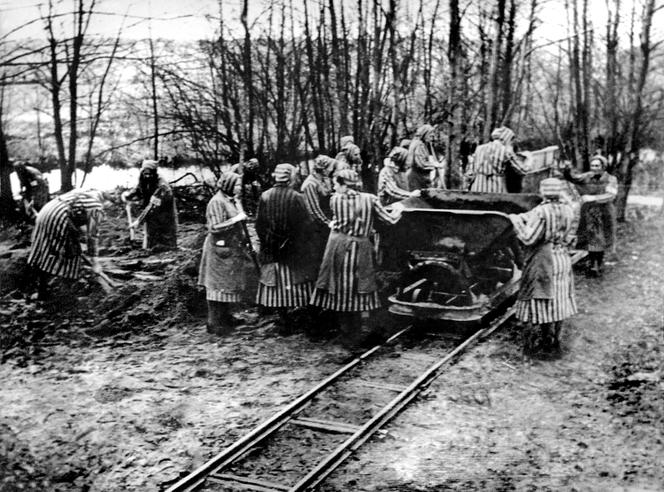


"Ravensbrück: the biggest brothel of the Third Reich," "The story of the Spanish women prostituted by the Nazis," "The little-known history of the concentration camp turned brothel." Almost all the major Spanish newspapers have devoted lengthy articles to praise novelist Fermina Cañaveras' work on the supposed recovery of the memory of Spanish women detained at Ravensbrück during World War II, in El Barracón de las mujeres ("The Women's Barracks," untranslated).
Released in January, this "historical novel," already in its sixth printing, is presented as the fruit of four years' research into a real-life figure, a certain Isadora Ramirez Garcia, who went to France in search of her brother (who had disappeared during the Spanish Civil War) before being deported and, according to the author, forced into prostitution for SS officers and soldiers at the Ravensbrück camp from 1942 to 1945. Cañaveras, a 47-year-old feminist activist with a degree in history, believes that it is time to bring the memory of the women deported to Ravensbrück "out of oblivion."
The problem is that there was never any brothel in this vast women's and children's concentration camp 80 kilometers north of Berlin, as the descendants of the prisoners, gathered together in the Amicale de Ravensbrück group, have angrily pointed out.
Of the 130,000 or so women who were sent to this camp, fewer than 210 were prostitutes beginning in 1942 and especially 1943, but in brothels set up in a dozen men's camps elsewhere, in Buchenwald, Mauthausen and Auschwitz. This is according to the most recent work by German historian Robert Sommer, author of Das KZ-Bordell (2022, untranslated), a reference work on forced sex work orchestrated by the Nazis.
Moreover, their "services" were not intended for the SS, as the author imagines – with a penchant for obscene descriptions of sexual abuse closer to morbid pornography than to the "homage" she claims to want to pay them. These women were intended for non-Jewish deportees, to stimulate and reward their work, per one of Heinrich Himmler's ideas, as well as for Ukrainian camp guards. They were mainly former German and Polish inmates, classified as "asocial," and sometimes former prostitutes.
Some were "volunteers," in the hope of surviving the appalling conditions of the camps, or even being released after six months, as they were promised. "I have identified nearly 90% of the women who were forced into sex work. No Spanish woman was forced to prostitute herself in the camps' brothels," said Sommer by telephone. In her interviews, Cañaveras has asserted that she has identified 26 Spanish women, without giving any names.
You have 51.41% of this article left to read. The rest is for subscribers only.
